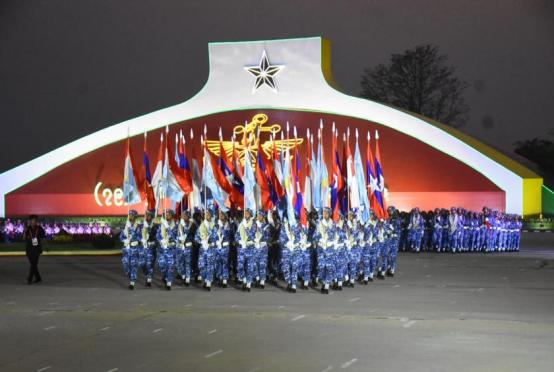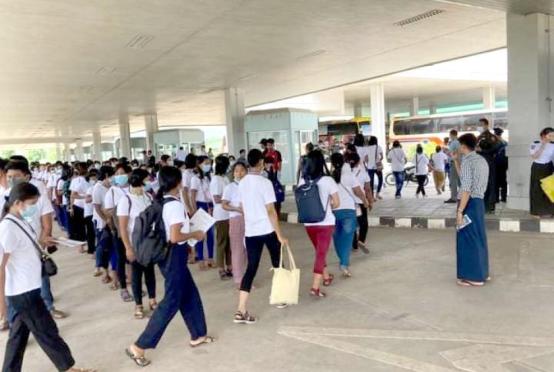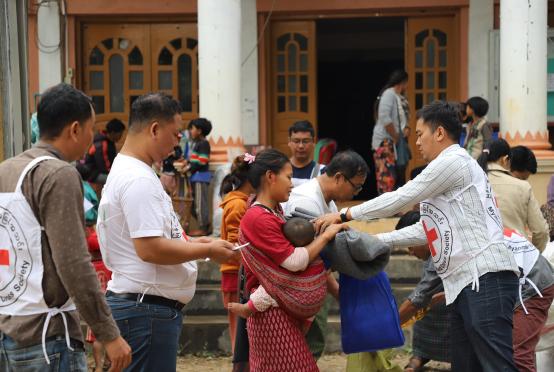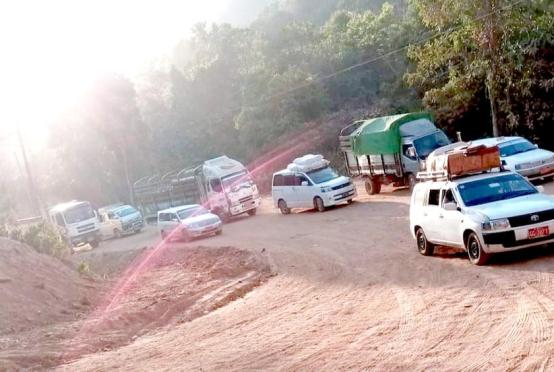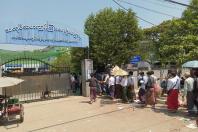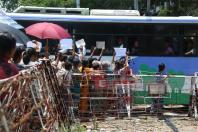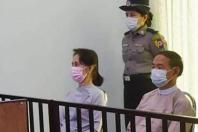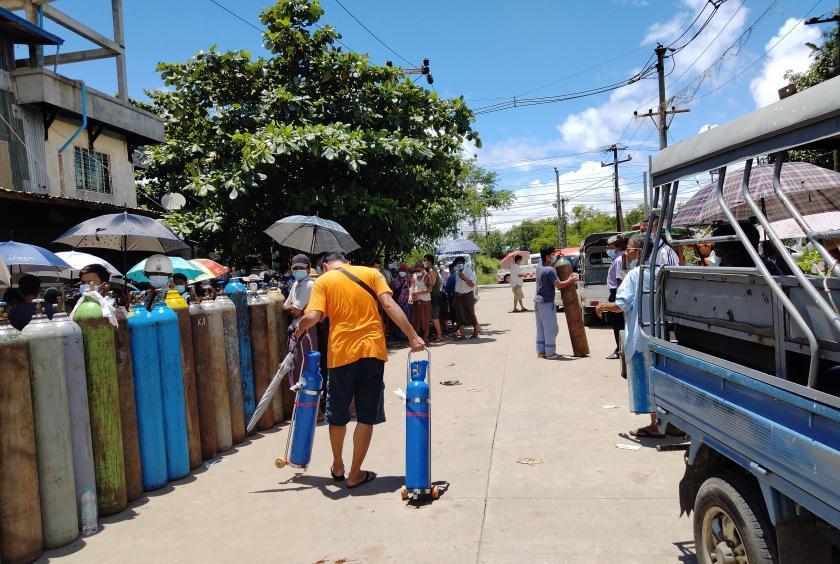
YANGON - The spread of Covid-19 variants has hit Myanmar hard with the number of official cases swelling towards 200,000 and 4,000 deaths and nationwide shortages of oxygen to treat severe patients.
July is the month health officials say the third Covid-19 wave has arrived in the country and much more infectious than the second. Laboratory tests show the presence of Alpha, Delta and Kappa variants, reported the The Ministry of Health and Information (MOHS).
The MOHS said Delta, even in comparison against another mutant variant Alpha, is 60 percent more infectious, especially among family members in close contacts, where most of the cases are detected.
The infection rate rose from 5.4 per cent late May to almost 20 per cent in June and hit 27.9 per cent on July 9. The number of deaths have also accelerated.
Myanmar has acquired two types of vaccines of the eight approved by the World Health Organisation (WHO) for emergency use. They are India-made Covishield and Chinese-made Sinopharm.
Myanmar has suffered from a halt in supply from India, the world’s largest vaccine making nation, which banned vaccine export because of swelling cases in the country. The supply from China has been limited only to 300,000 doses, enough for 150,000 people.
Just over 1.4 million people had received both doses of Covishield and 1.8 million just one dose. In term of population percentage it’s the lowest among Asean nations.
Asean has been discussing setting up a humanitarian corridor to aid Myanmar in the crisis but no progress has been reported.
According to Dr Khin Khin Gyi from the MOHS, the government is trying to immediately acquire 2 million doses of Russian-made Sputnik vaccine from the total target of 7 million. She also mentioned that 1 million doses of Sinopharm from China is also expected arrive in Myanmar in the second to third week of July.
MOHS has pledged to vaccinate half the population of Myanmar by the end of 2021.
More townships placed under lockdown
The stay-at-home order was issued at the end of May and has extended now to over 74 out of 330 townships throughout the nation as of July 13th. This includes 22 out of the 45 townships in Yangon Region, the most densely populated region in the country.
The plan of the MOHS and the Covid-19 Control Committee is to impose restrict movement from townships that were deemed viral hotspots into other, safer areas. A quarantine of 10 days will be imposed on those coming from stay-at-home townships even if Covid-19 tests are negative. While those not from stay-at-home townships do not need to undergo quarantine.
The high demand for oxygen
The severity of the cases has seen an overwhelming demand for oxygen –
Kale Township in Sagaing Region is a striking example with local people and civil socities reporting increasing demand of oxygen by the day.
"We have to wait for the oxygen truck to arrives. There are so many cases that, even when the truck came, the supply quickly runs out," said a Kale local.
When the initial brunt of the third wave ravaged Kale and local oxygen supply cannot keep up, oxygen had to be supplied from areas as far as Yangon or Mandalay.
Since then, Kale locals had managed to pool together their savings in order to try and obtain an oxygen distiller, which is able to pump out 78 cyclinders with 40 litre capacity per day since July 9.
"The pressure was relieved somewhat but the high demand is still there," said a local.
Since the beginning of the outbreak, Kale had reported high death rate from Covid-19, with reports that “there are no streets without funeral homes” within the town itself.
Since then, the need for oxygen had spread to places such as Yangon Region.
"We cannot get enough. We have been going around to fill up with the one cyclinder that remains. I feel sorry for the people," said a volunteer in Yangon.
This is a common occurrence in Yangon in recent days. There simply aren't enough volunteers, civil socities, well-wishers or donors to keep up with the oxygen demand.
"We used to have over 20 oxygen cylinders. We have zero now. We have rented them all out. Some are past their due dates but we have to keep using them them," said the volunteer.
Factories in South Dagon and Shwepyithar industrial zones had tried to meet the demand in vain.
"I've been waiting since the morning. We can no longer fill up 40 litre cylinders. Only 10 or 15 litre ones are okay. They say 40 litres will be available tomorrow. I have to take what I can get," said a person queuing up to refill oxygen in South Dagon industrial zone.
How much are they?
The sudden surge in demand and failure to keep up with such demand, means that oxygen prices have also skyrocketed and giving birth to a black-market dealers.
A 40 litre oxygen cylinder used to cost around 180,000 Kyats but now 600,000 Kyats.
"Even at that price of 6 Lakhs, I cannot find any supply to buy," said a person that tried but failed to purchase oxygen cylinders at more than triple their original prices.
"It is almost like buying smuggled items. We have to pay around 500,000 Kyats and even then, we have to buy one from here and another from there," said another volunteer in Yangon Region.
However, refill services provided by some outlets had kept their greed in check, only charging around 5000 Kyats per refill.
"The prices remain the same. If I charge people more now, I am not fit to be called a human," said an in-charge from an oxygen factory in South Dagon industrial zone.
Amidst the problems of oxygen supply and demand, there also are cases of deaths because patients or family members underestimated the need for oxygen in emergency.
"The oxygen level should be at least 94. If it gets lower than that, it might be difficult to breathe but oxygen supply must still be administered," said another in-charge from a volunteer group.
Minister of Investment and Foreign Economic Relation Aung Naing Oo had said that due to the urgent demand, oxygen concentrate are now allowed to be imported without first needing FDA approval license.
"Due to rise in Covid-19 cases and large demand for oxygen, friends and business owners had asked me what will be done to facilitate import of Oxygen Concentrators. I would like to notify all here that respective ministries have done the following to facilitate import of Oxygen Concentrators. FDA approval will no longer be needed to import Oxygen Concentrators. There is also no need to apply for an import license at commerce/trade ministry. If imported product arrives here, 3 percent tax will not be needed to pay immediately but later," said Aung Naing Oo on Facebook.
Where is the answer?
According to an official at the MOHS, the need to facilitate more oxygen supply into the country is of utmost importance.
Over 6,500 schools were reopened on June 1 for the 2021-2022 academic year but were forced to close, in a staggered fashion, in response to surging cases of Covid-19 which had seen several clusters at schools across Myanmar. Most have been temporarily shut down up to July 23.
Treatment at hospitals have been prioritized to give attention to the elderly and those with severe symptoms such as oxygen levels lower than 90 at Yangon General Hospital, North Oakkalapa Hospital and Phaung Gyi. Those with suspect cases of Covid-19 or those with lower symptoms are advised to seek treatment at nearby public health clinics and other healthcare departments.
The MOHS had said that Yoma Yeikthar Covid-19 Center had received 576 Covid positive patients with 1000 quarantined suspected cases. MCC Covid-19 center can only accept 250 positive patients. Inya Center in Mayangone Township can only accommodate up to around 500 patients.
The ministry had also said that Covid-19 tests can be taken at private hospitals with examples in Yangon Region being N Health, Pun Hlaing, Victoria, Aye, YAML Myanmar, Ar Yu, Bahosi, KBC, OSC and City Hospital.
Amidst the daunting task of attempting to control the Covid-19 outbreak, the matter of correctly introducing more life-saving oxygen supply into the country is the key puzzle to the question of how exactly to control the outbreak in the current situation.


